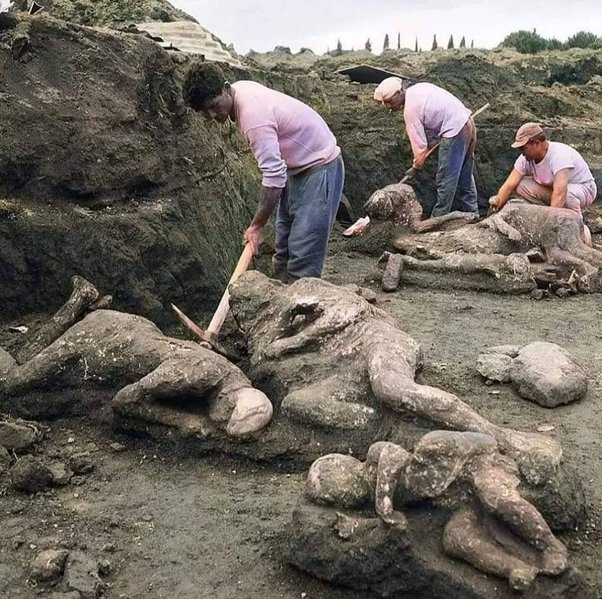During the first eruptive phase, the inhabitants who had not moved away from the city in time were trapped in the environments invaded by pumice and lapilli or were hit by the collapses caused by the eruptive material deposited up to a height of about three meters; only the skeletons of these victims were found.
Subsequently, a pyroclastic flow, at high temperature, invested Pompeii at great speed, filling the spaces not yet invaded by the volcanic materials and causing the instantaneous death by heat shock of those still in the city.
The bodies of these victims remained in the position where they had been invested by the pyroclastic flow, and the solidified cineritic material preserved their imprint after decomposition.
Image source:
Giuseppe Fiorelli was undoubtedly the most important archaeologist who worked in Pompeii in the 19th century. He had among numerous merits that of inventing the method of making casts of the victims of the eruption.
Thus writes Gaetano De Petra, one of his successors:
“The most fortunate of his inventions was the authentic image he gave of the Vesuvian catastrophe, pouring the liquid plaster into the boulder of ash that covered the skeletons, by which they relive in the forms and contractions of their agony.”
Writer Luigi Settembrini adds about the casts:
“It is impossible to see those unformed figures, and not feel moved…They have been dead for eighteen centuries, but they are human creatures seen in their agony. There it is not art, it is not imitation; but it is their bones, the relics of their flesh and cloths mixed with plaster: it is the pain of death regaining body and figure… So far you have uncovered temples, houses and other objects that interest the curiosity of cultured people, artists and archaeologists; but now you, O my Fiorelli, have uncovered human pain, and anyone who is a man feels it.”






